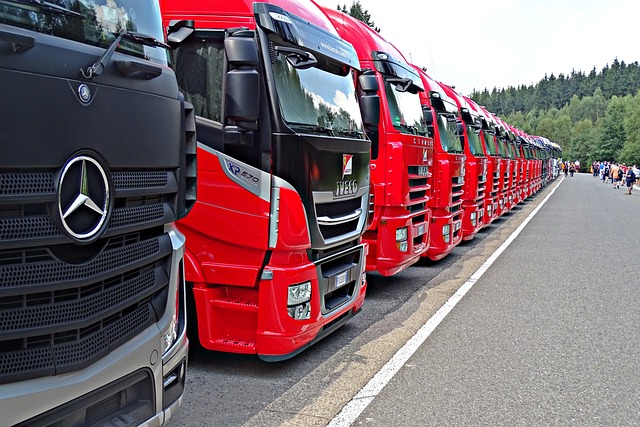Looking to register your car in California? This comprehensive guide walks you through every step, from understanding eligibility requirements to alternative DMV VIN verification methods. Learn how to gather essential documents, follow a simple process at the DMV, and handle post-registration tasks. Discover efficient ways to ensure compliance with California’s regulations using reliable tools like DMV VIN verifiers. Optimize your car registration experience and hit the road legally!
- Eligibility Requirements for Car Registration in California
- Gathering Necessary Documents for DMV Vin Verification
- The Step-by-Step Process of Registering a Vehicle at the DMV
- Alternative Methods for VIN Verification in California
- Post-Registration Tasks and Important Considerations
Eligibility Requirements for Car Registration in California

In California, registering a car involves meeting specific eligibility requirements set by the Department of Motor Vehicles (DMV). To begin the process, your vehicle must be legally owned and insured, and it should not have any outstanding warrants or defects that would prevent its operation on public roads. Additionally, the vehicle’s Environmental Emissions Inspection (EEI) must be up to date, ensuring it complies with state safety and pollution standards. A key step is obtaining a valid Vehicle Identification Number (VIN) verifier, often provided by a mobile VIN verifier service, which facilitates the verification process.
For out-of-state residents looking to register their vehicles in California, they must prove residency and provide documentation such as a valid driver’s license and proof of insurance. A mobile VIN verification can be particularly useful in these cases, allowing for a quick and efficient inspection of the vehicle’s history before registration. The DMV recommends completing the registration process online or at a local field office to streamline the experience and avoid potential delays.
Gathering Necessary Documents for DMV Vin Verification

Before heading to the California DMV for registration, ensure you gather all the necessary documents required for VIN verification. This process is crucial as it establishes the vehicle’s history and authenticity. Key documents include your car’s Vehicle Identification Number (VIN), which can typically be found on a plate near the driver’s side door or in the engine bay. For out-of-state transfers, you’ll also need documentation like title papers, registration certificates, and proof of insurance.
Additionally, consider having a mobile VIN inspection done by a trusted service provider to streamline the process further. This allows for a convenient, on-site verification, saving you time and potential trips back and forth. Having your VIN verified in advance can significantly simplify matters when it comes to registering your vehicle with the DMV, ensuring a smoother transition during the registration process.
The Step-by-Step Process of Registering a Vehicle at the DMV

Registering a car in California involves a straightforward process at the Department of Motor Vehicles (DMV). Here’s how it works:
1. Gather all necessary documents, including your vehicle’s registration from the previous state, proof of ownership, and identification. A clean driving record is also required for registration.
2. Visit or contact your local DMV office to initiate the registration process. You can now conduct a mobile vin inspection or visit with a DMV representative who will guide you through the steps. Provide them with your documents and vehicle information. The official will verify your Vehicle Identification Number (VIN) using a DMV VIN verifier, ensuring the vehicle’s history is clear and meets California standards.
Alternative Methods for VIN Verification in California

In California, registering a car typically involves verifying the Vehicle Identification Number (VIN). However, traditional methods at a DMV (Department of Motor Vehicles) office aren’t the only option. Many residents opt for alternative solutions, such as using a mobile VIN verifier. These services offer convenient, on-site VIN inspections, eliminating the need to visit a DMV.
A mobile VIN verification process is straightforward: a professional will come to your location, inspect the vehicle, and confirm its authenticity using specialized tools. This method is especially beneficial for those who have difficulty accessing a DMV office or prefer a quicker, more efficient registration experience. With the rise of mobile vin verifiers, the process of registering a car in California has become more flexible and accessible than ever.
Post-Registration Tasks and Important Considerations

After successfully registering your vehicle with the California DMV, there are several crucial post-registration tasks to complete. One essential step is obtaining a Vehicle Identification Number (VIN) verifier from a trusted source like the DMV or certified mobile vin inspection services. This process ensures that your car’s unique VIN is accurately documented and available for future reference.
Additionally, consider scheduling a mobile vin inspection to verify the vehicle’s condition and history independently. Such inspections provide peace of mind and can help identify any potential issues, especially when buying a used car. Regularly updating your vehicle’s records and ensuring all documents are in order is paramount, as it facilitates smoother interactions with law enforcement and insurance providers.
Registering a car in California is a straightforward process once you understand the requirements. By gathering the necessary documents, undergoing the DMV’s VIN verification, and following the step-by-step guide, you can ensure your vehicle is legally registered. Additionally, understanding alternative verification methods and post-registration tasks can further simplify the experience. Remember to always check with your local DMV for any updates or specific guidelines, as regulations may change over time. With these steps in mind, you’ll be well on your way to becoming a California car owner in no time.
